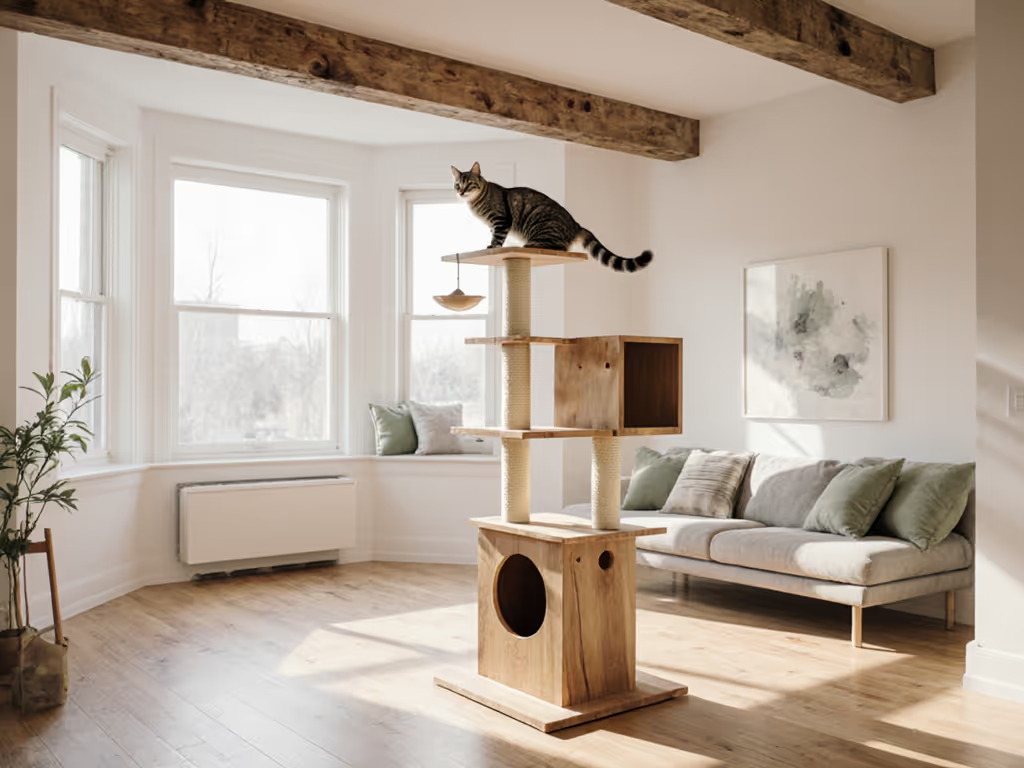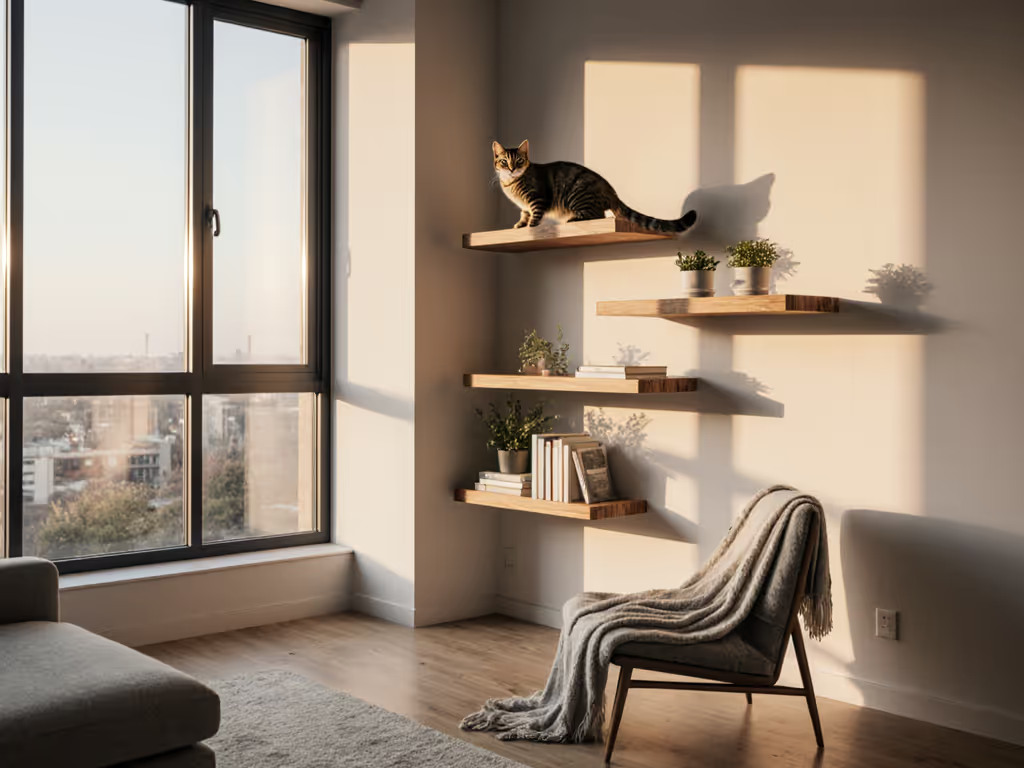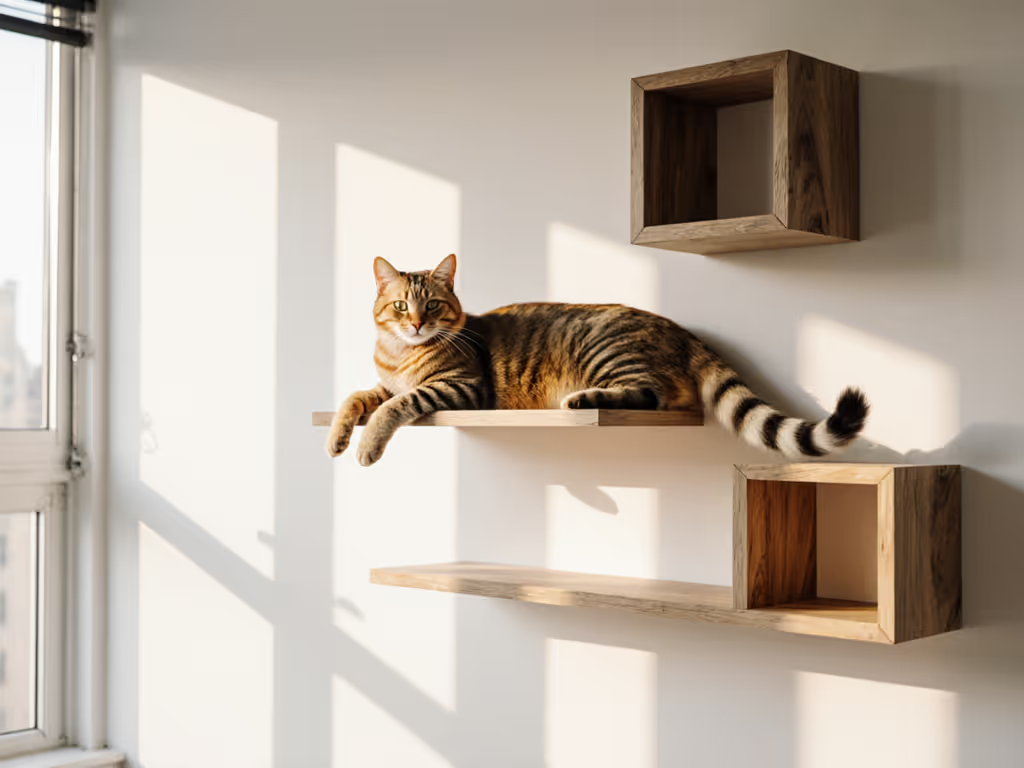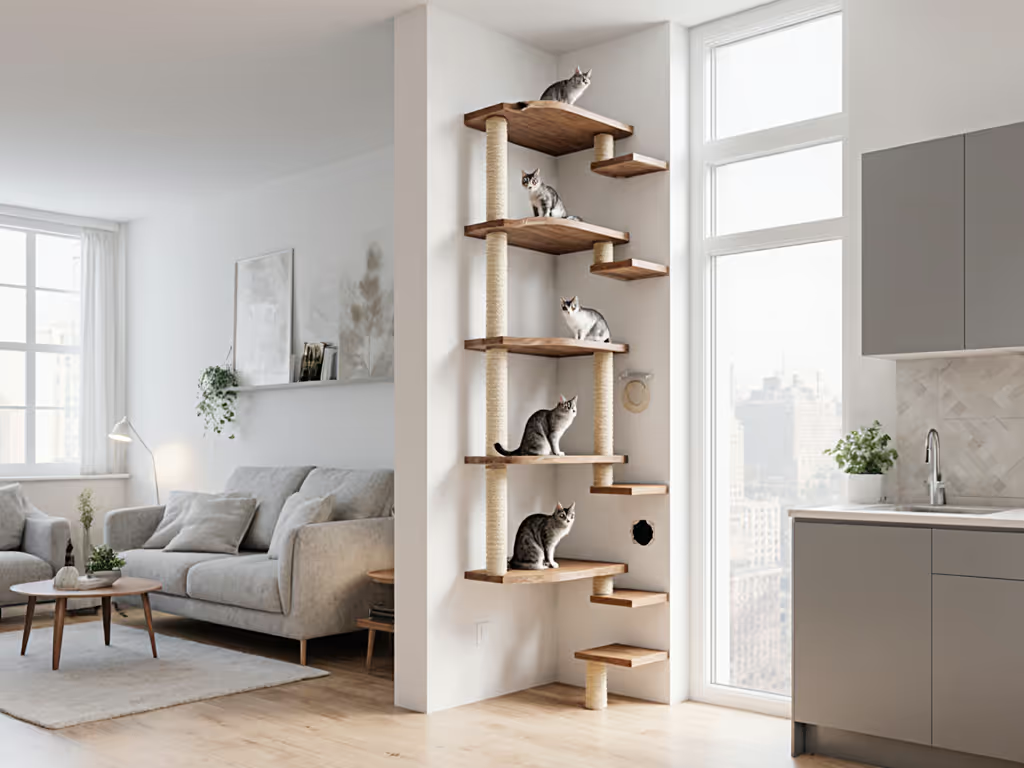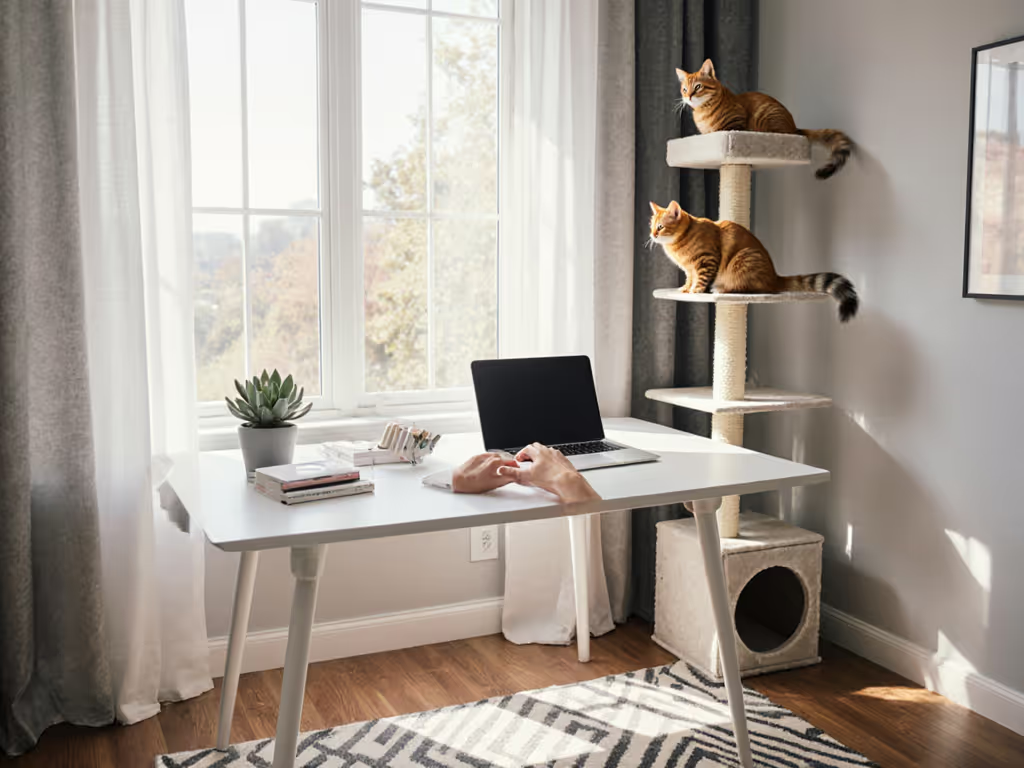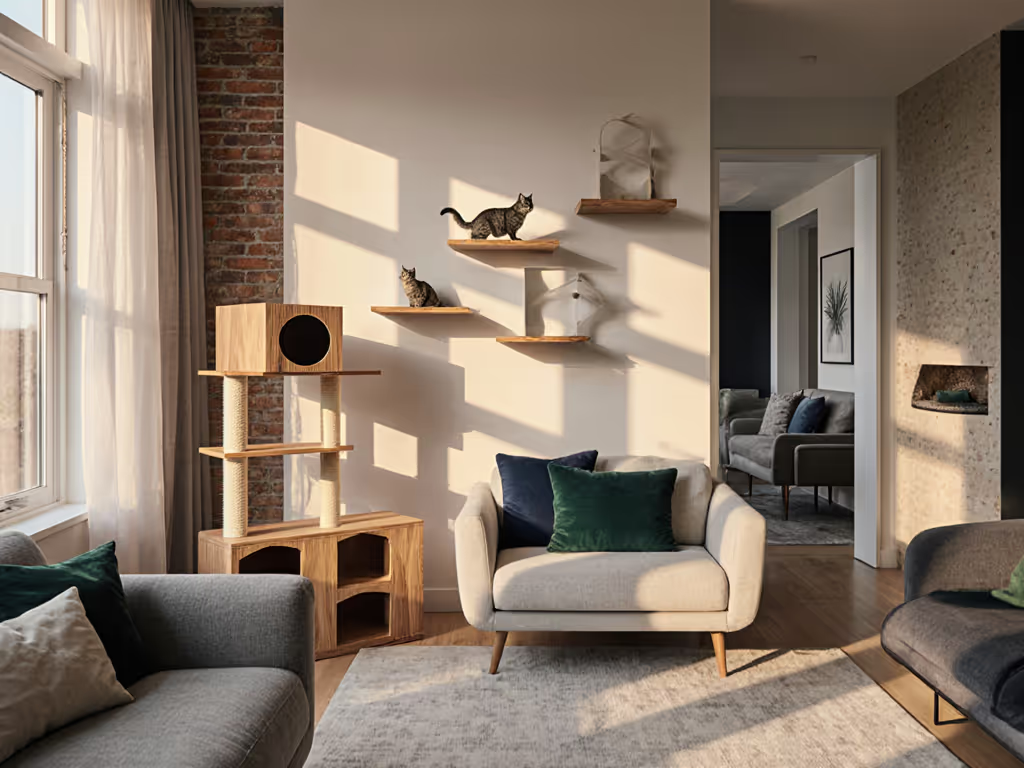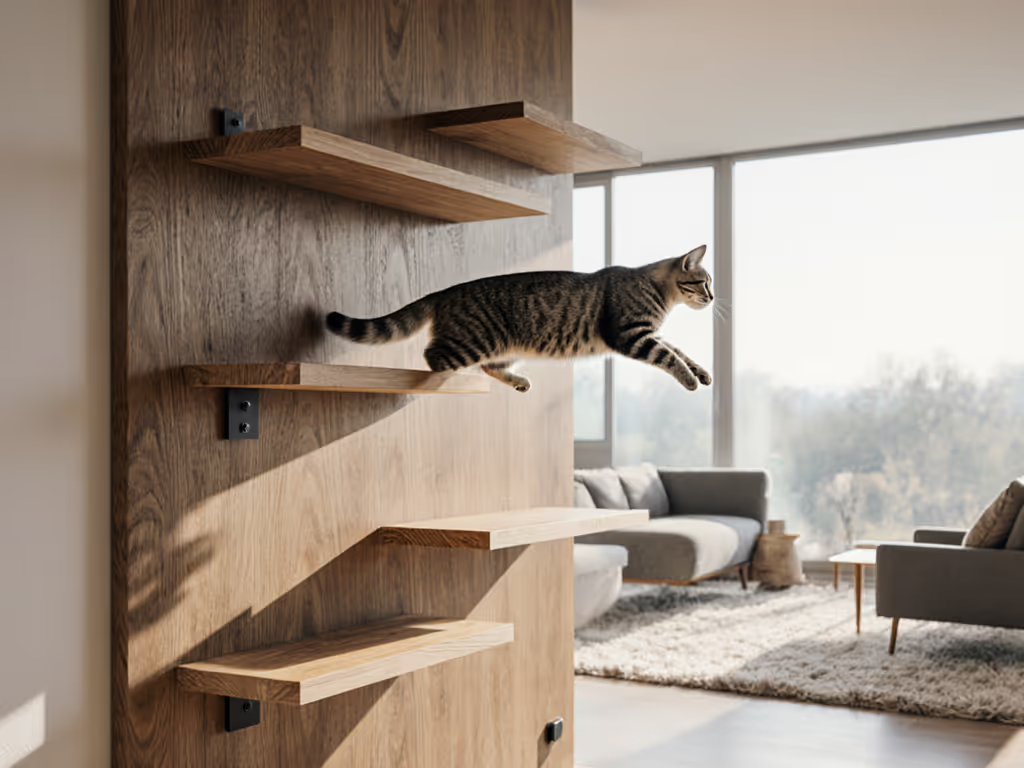Cats deserve environments that honor their instincts, not force them to compromise in cramped quarters. When searching for cat furniture small spaces, so many guardians feel trapped between preserving their home's aesthetics and meeting their cat's needs. The truth is, space-saving cat furniture doesn't have to mean minimalist cages or hidden compartments that ignore feline psychology. Instead, we can create environments where every square inch serves your cat's primal instincts while enhancing your living space. Behavior blossoms when spaces speak your cat's native language, offering choice, vantage, and safe retreats in harmony with your home.
The Behavior-First Approach to Small Space Design
Most "space-saving" solutions fail because they focus on reducing square footage rather than meeting instinctual needs. Boxes get stuffed under beds, trees become corner obstacles, and cats learn to associate their territory with limitations rather than possibilities. Before measuring your square footage, approach this as a behavioral blueprint project. Cats naturally seek high ground, hidden nooks, and scratching zones; we just need to integrate these instinctual requirements into your specific living situation with precision.
Step 1: Observe Your Cat's Current Territory Map
Your cat already has a mental blueprint of their territory, they have just communicated it through behavior rather than architectural plans. Spend three days tracking:
- Movement patterns: Where do they naturally pause, stretch, or watch from?
- Resource locations: How close do they feel to food, water, and litter boxes?
- Escape routes: What paths do they take when startled?
- Conflict zones: Where do tensions occur between multiple cats?
This mapping reveals where to strategically place furniture. If your cat currently jumps onto your bookshelf near the window, that's your vertical zone sorted (not with a bulky tower, but with a single wall-mounted perch). In apartment cat furniture design, this precision prevents wasted space on features your cat won't use. Remember: environments should offer choice, not force adaptation.
Step 2: Prioritize Vertical Pathways Over Horizontal Spread
Cats don't measure space in square feet but in vertical opportunities. The most successful small-space solutions embrace upward movement:
- Staggered wall shelves at varying heights create rest stops between climbing zones
- Wall-mounted scratching posts positioned beneath perches satisfy two instincts in one footprint
- Corner installations utilizing 90-degree angles maximize space efficiency
I once helped a client with a 450-square-foot studio by creating a vertical route that connected the bedroom nook to the kitchen window, a 12-foot journey using only six square feet of floor space. Their previously anxious cat, who had been scratching couch legs relentlessly, suddenly had a designated path to patrol her territory. We met the need, not the symptom. For layouts and real-world picks tailored to studios, see small space cat furniture solutions that work.
Step 3: Integrate Multi-Functional Furniture Strategically
The magic happens when cat spaces serve dual purposes for humans and felines. Look for opportunities where your needs align:
- Bookshelves with cat platforms: Position sturdy shelves (minimum 12" depth) at 24-36" intervals so cats can navigate while holding your favorite novels
- Hidden litter box enclosures: Repurpose stylish storage ottomans or built-in cabinetry that maintains airflow while concealing waste areas
- Sofa-side scratchers: Install wall-mounted posts beside seating areas where cats naturally stretch after naps
Multi-functional cat furniture isn't about disguising feline needs; it is about designing spaces where both species thrive. A client recently transformed a dead corner into a shared workspace with wall shelves holding both books and cat beds. Her formerly lethargic cat now patrols between work sessions, stretching on designated platforms before checking in on her guardian's progress.
When selecting pieces, prioritize stability over novelty. A wobbling perch creates anxiety, defeating the purpose of hidden cat furniture designed for safety. Anchor all vertical structures securely to wall studs, never rely on single-point mounts for active routes.
Step 4: Create Sensory Zones for Environmental Enrichment
Space efficiency shouldn't compromise sensory stimulation. Integrate these gentle enhancements:
- Scent-safe zones: Position horizontal surfaces below vents to catch warm air currents your cat can scent-mark
- Light tracking areas: Place perches in sunbeam paths that move throughout the day
- Texture variations: Incorporate sisal, carpet remnants, and smooth wood within jumping distance
This sensory-focused approach transforms minimalist cat furniture from sterile platforms to dynamic territories. During a recent consultation, I added vertical scratching posts at entry points to a client's bedroom, areas where their rescue cat previously marked doorframes. Within two weeks, the inappropriate marking ceased as the posts became established territory markers.
Step 5: Introduce Changes With Predictable Patterns
The most beautiful cat furniture fails if your cat won't use it. Implement changes through gentle habit shaping:
- Anchor new pieces with familiar scents (an old t-shirt works perfectly)
- Place high-value resources (treats, meals) on primary platforms for the first 3-5 days
- Create stepping stones between existing favorites and new zones using temporary cardboard ramps
- Maintain clear pathways during adjustment, avoid rearranging other elements simultaneously
This methodical approach mirrors how I helped Miso, a terrified shelter cat, transition from his carrier. By mapping a vertical route with staggered shelves and a cardboard tunnel, then feeding him on the second step, he began exploring his territory on day three: first stretching, then climbing, eventually greeting volunteers from above.
Reclaiming Harmony Through Space-Sensitive Design
Your apartment isn't too small for your cat, it is just waiting for design that speaks their language. The most effective space saving cat furniture honors three truths: cats need choice in how they move, predictability in their resource locations, and safe retreats from household activity. When these elements align with your aesthetic values, both you and your cat experience decreased stress and increased contentment.
Begin with one strategic addition that addresses your cat's most frequent behavior challenge. Anchor it securely, scent it with familiarity, and place high-value resources there temporarily. Watch how your cat responds (not as resistance to "training") but as communication about their territory needs. Small-space cat habitat design isn't about limitation; it's about precision in meeting needs without cluttering your shared home.
Meet the need, not the symptom.
